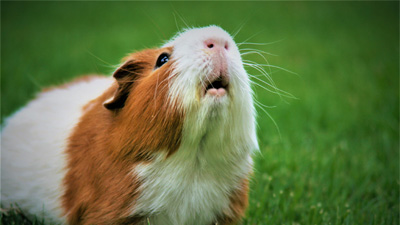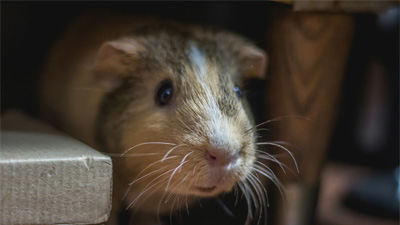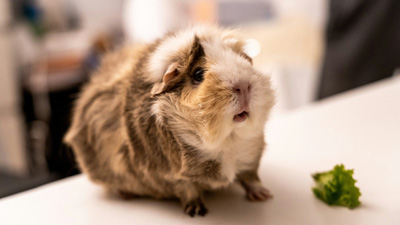Male vs. Female Guinea Pig: What Is the Difference?

Photo by Bonnie Kittle on Unsplash
When it comes to choosing a guinea pig, deciding between a male or female can be a significant consideration. While both males and females make adorable and lovable pets, there are distinct differences between the two genders that can affect their behavior, social dynamics, and overall care. This article aims to explore the differences between male and female guinea pigs, focusing on factors such as behavior, dominance, reproduction, hormonal influences, and compatibility with other guinea pigs. By understanding these differences, you can make an informed decision and provide the best care for your furry friend.
Behavioral Differences
One of the most noticeable differences between male and female guinea pigs lies in their behavior. Male guinea pigs, known as boars, tend to be more assertive and dominant in nature. They may exhibit behaviors such as chin rubbing, scent marking, and mounting other guinea pigs or objects as a display of dominance or territoriality. Boars are also more likely to engage in aggressive behaviors, such as chasing or nipping, especially when introduced to other unfamiliar male guinea pigs.
Female guinea pigs, called sows, are generally more calm and sociable. They tend to be less territorial and less prone to aggressive behavior compared to males. Sows are often more receptive to social interactions and are more likely to form close bonds with their human caretakers.
Dominance Hierarchy
In groups of guinea pigs, whether it's a same-sex pair or a larger mixed-sex group, a dominance hierarchy may develop. In the case of male guinea pigs, establishing a hierarchy often involves displays of dominance, such as mounting, chasing, and vocalizations. This hierarchical order helps to establish the social structure within the group and prevent constant aggression.
Female guinea pigs, on the other hand, generally establish dominance more peacefully and rely less on overt displays of dominance. Sows are more likely to use body language cues, such as grooming and subtle postures, to establish their position in the hierarchy. Female guinea pig groups tend to be more harmonious, with fewer instances of aggression compared to male groups.
Reproduction and Pairing Considerations
If you are considering breeding or keeping multiple guinea pigs, understanding the reproductive behaviors and considerations of males and females is crucial. Male guinea pigs become sexually mature around 3-5 months of age. They have a strong reproductive drive and may show mounting behaviors towards other guinea pigs, regardless of gender. It is important to note that housing a male guinea pig with a female can quickly lead to unwanted breeding if not carefully monitored.
Female guinea pigs reach sexual maturity at around 2-3 months of age, and they experience regular estrous cycles. It is essential to be aware that females can become pregnant as early as four weeks of age, so it is recommended to separate males and females in cages once they reach sexual maturity to avoid unwanted pregnancies.
If you have multiple guinea pigs and want to ensure compatibility, it's generally best to pair guinea pigs of the same gender or have them spayed/neutered to prevent mating and aggression. If introducing a new guinea pig to an established group, it is advisable to follow a gradual and supervised introduction process to minimize stress and ensure a smooth adjustment.
Hormonal Influences
Both male and female guinea pigs have hormonal influences that can affect their behavior and overall well-being. Male guinea pigs can experience hormonal shifts commonly known as "boar behavior" or "boar rage." This behavior is typically seen in older male guinea pigs and is characterized by heightened aggression, irritability, and sudden mood changes. While not all male guinea pigs exhibit boar behavior, it is important to be aware of these hormonal influences and provide appropriate care and environmental enrichment to minimize stress.
Female guinea pigs, on the other hand, experience estrous cycles which can affect their behavior. During estrus or heat, females may become more restless, vocalize more frequently, and display behaviors such as dragging their hindquarters or mounting objects. It is important to be aware of these hormonal changes and provide a safe and comfortable environment for female guinea pigs during this time.
Grooming and Handling
In terms of grooming and handling, both male and female guinea pigs require regular care to keep their coats and nails in good condition. Long-haired breeds may require more extensive grooming to prevent matting and tangling.
When handling guinea pigs, both male and female guinea pigs can be friendly, docile, and enjoy human interaction if they are properly socialized and handled from a young age. However, it's important to note that individual temperament can vary, and some guinea pigs may be more skittish or less inclined to be held and cuddled.
Conclusion
Choosing between a male or female guinea pig is a personal decision that should take into account your specific circumstances and preferences. Male guinea pigs may exhibit more assertive and dominant behaviors, while females generally possess calmer and more sociable temperaments. Understanding the reproductive behaviors, hormonal influences, and social dynamics of each gender can contribute to successful guinea pig ownership.
Regardless of gender, providing a loving and caring environment, along with regular veterinary check-ups, a nutritious diet, and ample social interaction, is crucial for the health and well-being of your guinea pig. Remember to devote time and attention to your furry friends, and they will surely bring joy, companionship, and endless squeaks of happiness to your life.





